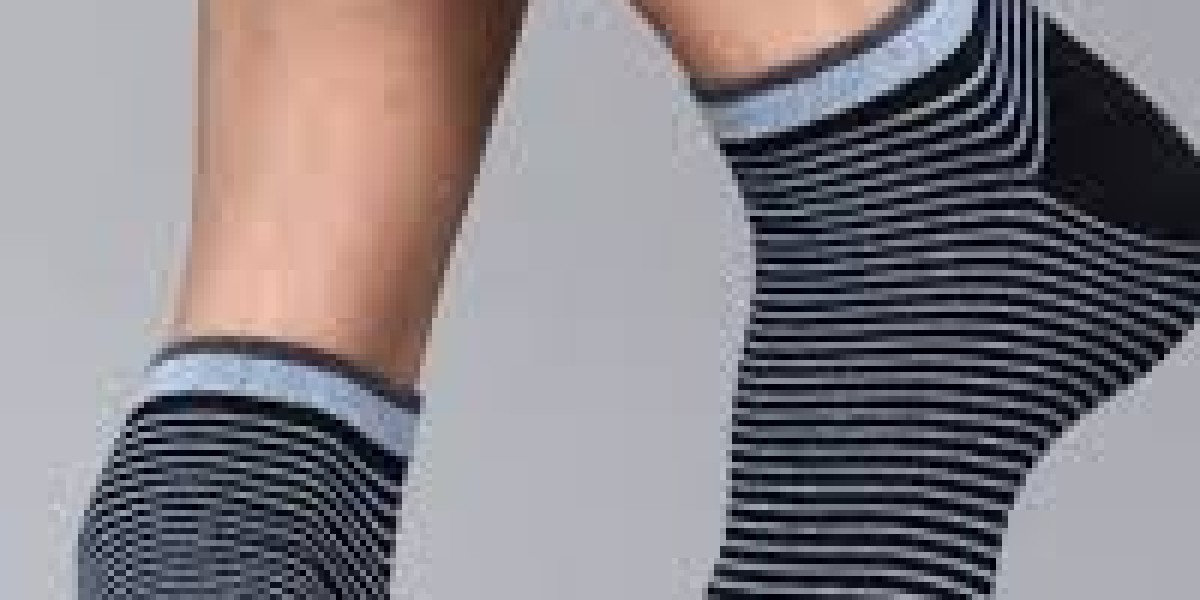When it comes to foot and leg care, not all socks are created equal. Compression socks and ankle socks both serve important roles, but they cater to different needs. Whether you’re dealing with medical issues, standing on your feet all day, or simply looking for everyday comfort, it’s essential to know which type of sock is best suited for your lifestyle. This blog will explore the benefits of compression socks, compare them with ankle socks, and help you understand how to choose the right option.
What Are Compression Socks?
compression socks are specially designed to improve circulation and reduce swelling by applying gradual pressure to your legs and feet. They are commonly recommended for individuals with circulation problems, such as varicose veins, deep vein thrombosis (DVT), and edema. By promoting blood flow from the legs back to the heart, compression socks help reduce the risk of blood clots and alleviate discomfort caused by poor circulation.
Key features of compression socks include:
- Graduated compression: Tighter around the ankle, loosening as they go up the leg.
- Medical and non-medical uses: Commonly prescribed for health conditions but also used by athletes and travelers for performance and comfort.
The Benefits of Compression Socks
Improved Circulation: One of the most significant benefits of compression socks is their ability to enhance blood flow. The gradual pressure helps push blood back to the heart, preventing pooling in the legs and reducing the risk of swelling and clotting.
Swelling and Edema Control: Compression socks are particularly helpful for individuals who experience swelling in their legs and feet. The compression helps keep fluid from building up in the tissues, which can reduce discomfort and prevent long-term issues.
Reduced Fatigue: If you spend long hours on your feet, whether at work or during physical activity, compression socks can help reduce muscle fatigue by increasing oxygen flow to your muscles. This can be particularly beneficial for athletes, who use compression socks to enhance performance and speed up recovery times.
Prevention of Varicose Veins: By promoting healthy circulation, compression socks can help prevent or manage varicose veins and spider veins, common conditions that can cause discomfort and lead to more serious health problems over time.
How Do Compression Socks Differ from Ankle Socks?
While compression socks are primarily used for medical and performance-related benefits, ankle socks are designed for everyday comfort. Ankle socks are shorter in length, typically ending just above the ankle, making them ideal for casual wear and sports.
Here’s how compression socks and ankle socks differ:
Purpose: Compression socks are used to improve circulation and manage medical conditions, while ankle socks are for regular, comfortable wear in casual settings or during physical activities like walking, running, or exercising.
Length and Fit: Compression socks usually extend up to the knee or higher to provide full leg support, whereas ankle socks only cover the foot and stop at or just above the ankle.
Support Level: Compression socks provide firm support to enhance blood flow, while ankle socks are lightweight and breathable, focusing more on comfort than on medical benefits.
When to Wear Compression Socks
Compression socks are ideal for situations where you need added support for your circulation or are at risk of developing leg-related health issues. Here are a few scenarios where compression socks can be highly beneficial:
Travel: Long flights or car rides can restrict movement and lead to poor circulation, which can result in swelling and increase the risk of blood clots. Wearing compression socks during travel helps prevent these issues.
Athletic Performance: Athletes often wear compression socks during training or recovery to improve circulation, reduce muscle fatigue, and prevent injuries.
Standing or Sitting for Long Periods: Whether you work on your feet all day or sit at a desk for hours, compression socks can alleviate discomfort by improving blood flow and reducing swelling.
The Role of Ankle Socks in Everyday Comfort
While compression socks excel in medical and performance settings, ankle socks are the go-to choice for everyday wear. They are perfect for pairing with sneakers, loafers, or any low-cut shoes, providing comfort without the bulk of longer socks. Here are some benefits of wearing ankle socks:
Breathability: Ankle socks are often made of lightweight and moisture-wicking materials, keeping your feet dry and cool, especially during warmer months.
Versatility: Ankle socks are versatile enough to be worn for various activities, from casual outings to gym sessions. They provide adequate protection and cushioning for your feet without extending up the leg.
Style: Available in a wide range of colors and designs, ankle socks are a fashionable addition to any wardrobe. Whether you're dressing casually or gearing up for a workout, ankle socks offer flexibility and comfort.
Conclusion
While both compression socks and ankle socks have their place in your wardrobe, they serve very different purposes. Compression socks are a great choice for people who need to improve circulation, reduce swelling, or manage conditions like varicose veins. They also provide excellent support for athletes and those who spend long periods standing or sitting. On the other hand, ankle socks are all about comfort and versatility, making them perfect for daily wear and low-impact activities.
By understanding your needs, you can choose the right type of sock for every situation. Whether you’re looking for enhanced performance or just everyday comfort, both compression and ankle socks can make a significant difference in your foot and leg health.







